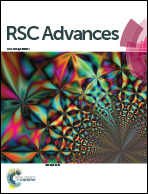Corrosion kinetics and mechanisms of ZrC1−x ceramics in high temperature water vapor
Abstract
The corrosion kinetics and mechanisms of ZrC1−x ceramics in water vapor between 800 and 1200 °C were investigated. The results showed that there was only cubic ZrO2 phase in the corrosion layer when corroded at 800 °C, while a scale layer consisted of a mixture of cubic and monoclinic ZrO2 phases when corroded at 1000 °C and 1200 °C. A series of crystallographic relationships at the ZrC/c-ZrO2 interface were detected. The c-ZrO2 formed near the interface retained some crystallographic orientations of the initial ZrC before corrosion, presenting an “inheritance in microstructure” between c-ZrO2 and ZrC. The corrosion behavior mainly followed a parabolic relationship. The incremental rate of weight gain increased with increased corrosion temperature and decreased C/Zr ratio and the carbon vacancy was passive to the decrease of corrosion rate. The main corrosion controlling mechanism changed from phase boundary reactions to surface diffusion and then to grain boundary diffusion with increased temperature.



 Please wait while we load your content...
Please wait while we load your content...